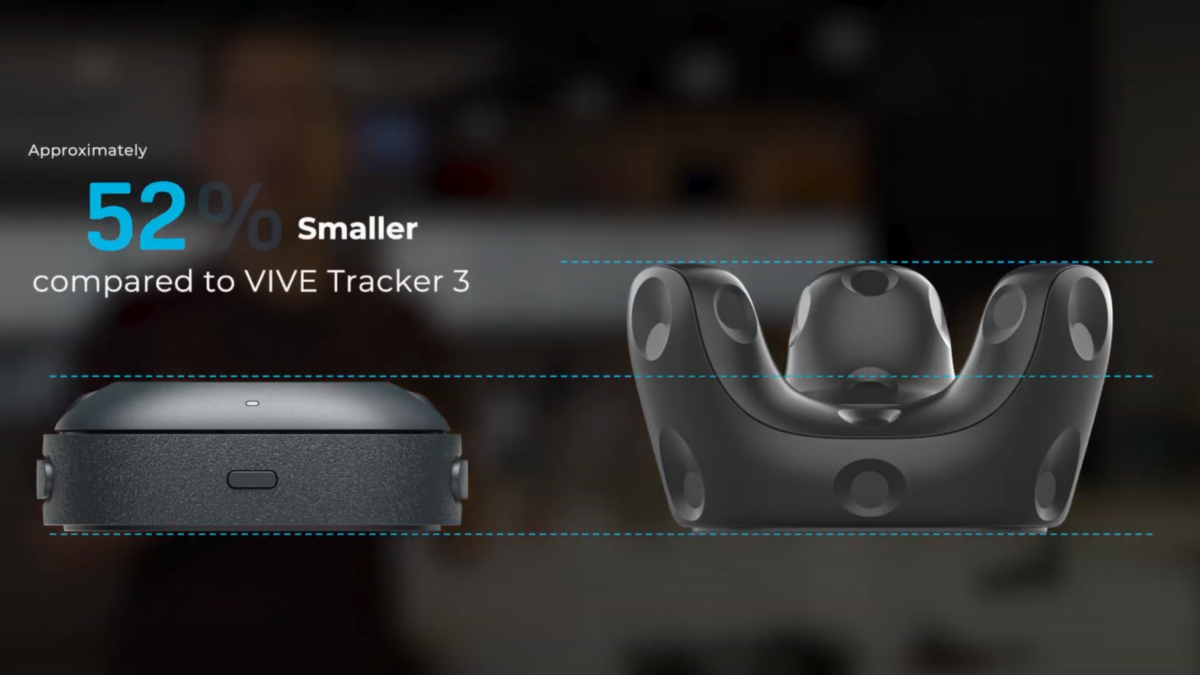HTC's upcoming Vive Tracker doesn't require base stations

HTC just announced a smaller Vive Tracker that doesn't need base stations, and up to five can be used at once with a USB-C dongle.
HTC hasn't named its self-tracking tracker yet, but it did provide several details about this new solution. OpenXR is supported for expanded compatibility with more devices.
HTC continues its dedication to modular designs, adding another option to its three generations of Vive Trackers, Facial Tracker, and Wrist Tracker. A video accompanying the announcement notes that the new self-tracking tracker is not meant to replace the Vive Tracker 3.0.
What is HTC's Vive Self-tracking tracker?
VR headsets recognize when your head and hands move, either using external base stations or internal cameras to monitor the position of the VR headset and controllers.
What about your body, legs, and other objects? That's what Vive or Tundra Trackers handle, and each solution requires SteamVR base stations. PC VR users will be more familiar with this than Quest 2 or Pico 4 VR headset owners, since these standalone headsets use inside-out tracking.
HTC's self-tracking tracker offers a wireless inside-out solution for body tracking. This aligns with the tracking systems of the Vive XR Elite headset and Focus 3, which don't need base stations either.
Up to five Vive self-tracking trackers can be wirelessly connected to your VR headset via a USB-C dongle. The new tracker is also smaller and lighter than the Vive Tracker 3.0, weighing just 100g, potentially making it more comfortable for long sessions in VR when worn as body trackers. The same pogo pins and mounting system is available, along with a new quick-release mechanism.
Compatibility and availability
HTC's self-tracking tracker is coming in the third quarter of 2023. It will, of course, work with the new HTC Vive XR Elite and Vive Focus 3. For HTC's Vive Pro and Cosmos Elite models, SteamVR lighthouse tracking is still recommended.
Since this new system is compatible with OpenXR, it should work with several non-Vive VR headsets and possibly AR glasses. HTC also teased that more information would be announced in the coming months, including details about support for standalone VR headsets. It's unclear whether the Quest 2 and Pico 4 headsets will be compatible, although both support OpenXR.
HTC's new tracking solution sounds somewhat similar to Sony's Mocopi trackers, SlimeVR, and others. HTC describes the new system as being the same technology used in the Vive XR Elite and Vive Focus 3, so it might offer greater accuracy than competing inside-out trackers. We can't say for sure until we get to experience the quality.
More details will emerge in the next few months, so check back for more complete information and specifications in the future.
Note: Links to online stores in articles can be so-called affiliate links. If you buy through this link, MIXED receives a commission from the provider. For you the price does not change.